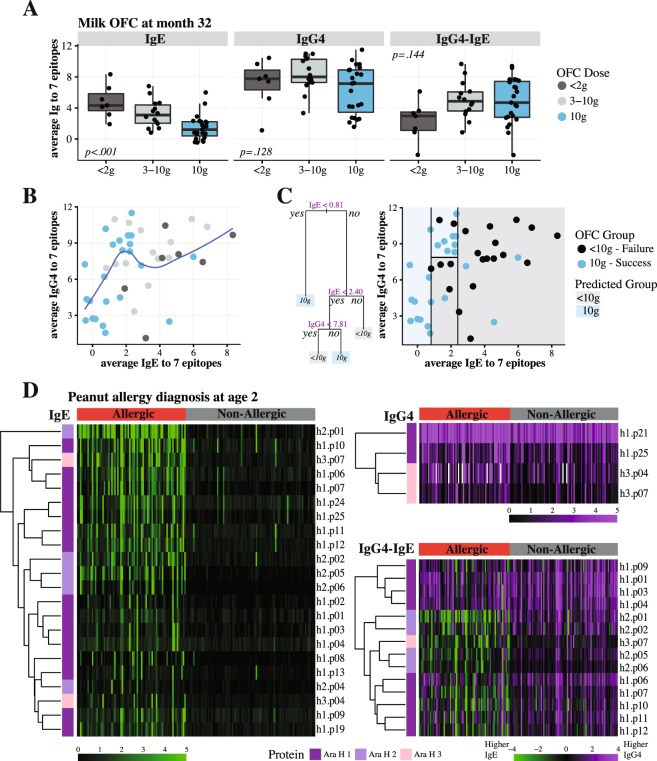Figure 5.
Relationship between epitope-specific IgE and IgG4 antibodies. (A) Boxplots of the average of 7 milk epitopes show dose-depended relationship between IgE and the OFC dose at month 32 of 44 patients; while the relationship is less clear for either IgG4 or IgG4-IgE ratio. (B) Scatterplot with the loess smoothed line of the average IgE and IgG4 to 7 milk epitopes; each point represents an individual patient, colored by the amount of protein they were able to consume during the OFC at month 32. (C) A classification tree determining best relationship between IgE and IgG4 and the binary outcome of the OFC, shows that having very high or low levels of IgE is enough to classify the OFC outcome, while at the intermediate IgE levels (0.81–2.4), high IgG4 (>7.81) can further improve classification. (D) Heatmaps of 73 peanut allergic (red) and 83 non-allergic (grey) patients and their IgE, IgG4, and IgG4-IgE binding to epitopes from 3 peanut proteins. The epitopes with FCH≥1.5 and FDR <0.05 are presented. All IgG4-IgE epitopes are also present among the IgE ones, indicating that IgE binding alone is most informative in identifying differences among allergic and non-allergic individuals.

